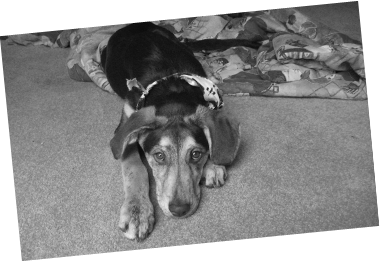 |
| photo courtesy of http://www.lizardtypes.com/bearded-dragon/ |
Bearded dragons live on average 10 years in captivity and grow to be anywhere from 12 to 20 inches. They generally should be housed alone although sometimes juveniles can be housed together. A single adult dragon requires a minimum enclosure size of about 48 inches long x 19 inches wide x 22 inches high (75 gallons). The tank should have both basking and hiding areas, and the addition of some branches and rocks would be welcome by most beardies. The best substrate for the bottom on the cage is up for some debate amoung the experts but at Winrose we do not recommend using sand or gravel on the bottom of the cage. This is due to problems seen with gastrointestinal impactions and irriations to the eyes and mouth. Repticarpet is a good option or paper towel which can be easily changed.
Heating and cooling of the enclosure is very important. There must be a warm and a cool side so that the dragon can choose where to go to regulate their body tempterature as needed. During the day the temperature should be 24 degrees C on the cool side and up to 30 degrees C on the warm side. There should also be a basking area that should be in the range of 32-37 degrees C. You should have at least 3 thermometers in the enclosure (one for each temperature zone) and they should ideally be placed where the Beardie spends most of its time. Special lighting is required for most reptiles, including Bearded Dragons. UVB light is required for calcium metabolism. A specific UVB light should be purchased and changed every three to six months.
Juveniles should be fed a diet that is 50% vegetables and 50% insects. Adults should be fed about 80% vegetables and 20% insects. Ideal veggies include dark leafy greens such as romaine, green or red leaf lettuce, collard greens, baby kale, endive, parsely, bok choy, broccoli leaves and florets. Small amounts of other veggies can be given such as carrots, squash and peas. Greens should be chopped or shredded and sprayed with water before being offered on a plate once or twice a day.
Crickets can be offered once or twice daily and should be no longer than the width of the dragon's head. They should be gut loaded and dusted with a calcium supplement 4-5 times a week. Fresh cool water should be available daily in a shallow dish that the bearded dragon can easily climb in and out of. You can also encouage drinking and healthy shedding by misting with water once daily and doing a warm, shallow water soak twice weekly for about 15 minutes.
Thanks as always for reading!
Dr Ingrid
Please note that much of the information from this article was sourced from http://www.seavs.com/exotic-pet-care-information/ which is an excellent source for husbandry information for all types of exotic pets.

















